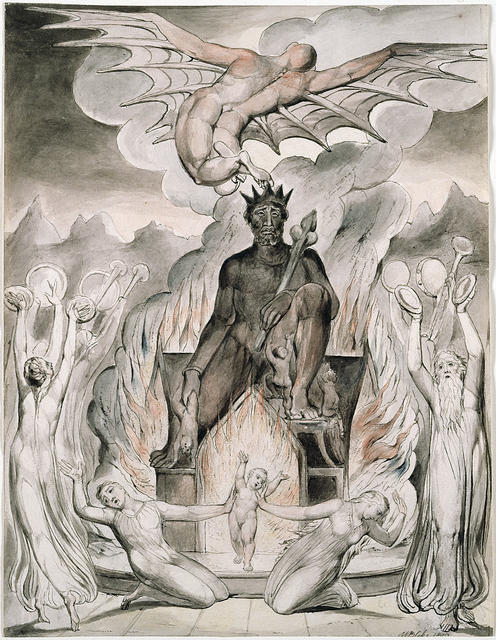Comments by Brian Shilhavy
Editor, Health Impact News
As we watch the entire supply-chain in the United States begin to fail, and the catastrophic effects that will plunge this nation most likely into chaos and social unrest in the not-too-distant future, one only needs to observe what is happening with our railroad system to understand how truly gigantic, and horrifying, this situation is today.
John Schmitter writing for RailState gives a good description of the current problem:
The recent Surface Transportation Board hearings have brought to light a long-existing issue in the rail industry: capacity. Railroads prioritize cutting costs and raising prices (with a focus on the operating ratio). They have less concern about capacity and service. Take this article about Union Pacific, for example. UP has been removing up to 3% of railroad-controlled cars from the network, in order to manage the current congestion. The number of cars on the UP system, however, remains on the rise.
How can we conceptualize this? Say you’ve been going to your favorite grocery store and have noticed that over the past few months, the checkout lines have been long and the shelves have been empty. The problem? The store doesn’t have enough people to work the checkout lines, and the owners aren’t ordering more inventory because that would drive up inventory costs. Instead, they’re telling their customers to shop less frequently and to buy fewer things. Their solution is to limit the amount of time customers may spend in the store, and the amount of goods they may buy.
How much business would you expect this grocery store to maintain? Zero. Competitors would add staff and increase the inventory, and you — looking for a better shopping experience — would be forced to take your loyalties elsewhere.
Railroads have a monopoly, which means there’s no penalty for failure to provide enough capacity to handle even small, unanticipated increases in volume. Railroads will handle the business eventually, unless the customer loses the sale completely. And herein lies the issue: everyone else in the network is forced to suffer, thanks to these performance hindrances.
Constrained capacity means that even a small, unexpected increase in demand will bring the network to a grinding halt. According to the railroads, there’s not enough time or money to add crew members or line capacity. Adding more crew members requires at least six months of training, so they may work safely and productively. (Full article.)
As a business owner myself with a 20-year history of importing high quality foods to the U.S., I can tell you that I have never seen anything like this. We import foods from Europe, Chile, Mexico, and the Philippines.
For the past year plus, getting our containers loaded onto ships in Manila Bay which originate from China, has been, by far, the most difficult. We have had to wait for weeks sometimes to book ocean freight, and then wait long periods of time again to be able to offload the containers from the ships in California.
But now, the biggest bottleneck from our Asian shipments, by far, has been booking rail freight from the port in California to our main warehouse in Texas. Right now, we have a container of coconut oil that has endured the long waits of securing ocean passage and clearing customs in California, only to have it sit on the rail system for weeks now, with no idea when we will be able to move it to our warehouse in Texas.
This is product that we originally shipped from Asia in early March, which pre-COVID would be in our warehouse about a month later, and here in June is still tied up in supply chain logistical nightmares due to the railway congestion.
Michelle Edwards, writing for UNCOVERDC, explains just how catastrophic this railway congestion is going to be for the energy and food sectors of the American economy.
Crisis On The Rails: Pilot Flying J CEO on Rail Mandates & Fuel Costs
by Michelle Edwards
UNCOVERDC
The ongoing “crisis on the rails” has paralyzed farmers, leaving them literally “hours away from depopulating herds.” The rail crisis, which is “harming the nation’s economy,” impacts the supply chain of U.S. agriculture, energy, and shipping across the board.
To address the severe situation, the Surface Transportation Board (STB) held a hearing in late April, giving those affected the opportunity to speak. Pilot Flying J CEO Shameek Konar spent his time during the extensive testimony revealing the unprecedented difficulties his company faces following unheard-of restrictions imposed by Union Pacific Railways.
Operating the largest network of travel centers in the United States, Pilot Flying J was founded by James A. Haslam II in 1958. Headquartered in Knoxville, TN, the company accounts for nearly 20 percent of the nation’s over-the-road diesel supply and 30 percent of the diesel exhaust fluid (DEF) supply. Threatened by a severe reduction in rail service allocations, the company heavily relies on the railroads to deliver its product.
Rail Restrictions Imposed on Pilot Flying J by Union Pacific
At the Apr. 26 & 27 hearing, Konar explained that on Apr. 13, Pilot Flying J was informed by Union Pacific Railways (UP)—whose largest shareholders are Vanguard and Blackrock—that the company was “required to reduce shipments by 26 percent.” Then, in subsequent conversations, UP asked them to reduce rail shipments even further by 50 percent or face embargoes. According to Konar, no other companies are being instructed by UP or any other railroad to reduce their shipments to the extent that UP demands Pilot Flying J.
Executives from major U.S. railroads also attended the hearing. Union Pacific Railway Company (UP), BNSF Railway Company (BNSF), CSX Transportation (CSX), and Norfolk Southern Company (NS) made clear that higher volumes and labor constraints presented obstacles to providing better rail service. With long-standing complaints from shippers of extensive delays, unfilled orders, and other significant and rising disruptions, the railway carriers stated individual strategies to build up the industry workforce and restore service.
Concerned over the workforce shortage, on Apr. 7, when announcing its upcoming hearing (download Notice of Public Hearing here), STB underscored that over the last six years, Class I railroads have collectively reduced their workforce by 29 percent—cutting nearly 45,000 employees from the payrolls. Board Chairman Martin J. Oberman commented on the impact of the significant cuts. He remarked:
“In my view, all of this has directly contributed to where we are today—rail users experiencing serious deteriorations in rail service because, on too many parts of their networks, the railroads simply do not have a sufficient number of employees.”
Union Pacific, which plans to remove anywhere from 2% to 4% of its cars from the network, reported at the hearing that it is asking shippers with the highest impact on its network, including Pilot Flying J, to reduce inventory as the railroad is dealing with over 20,000 excess cars on its grid. With a forecast of “the better half of the year to de-congest the network,” Eric Gehringer, executive vice president of operations at UP, noted:
“We are taking an aggressive approach to reducing operating inventory—more aggressive than in the past.”
Still, Konar remarked that, based on conversations with UP, the heavy restrictions imposed on Pilot Flying J do not “fairly and proportionately” allocate the supply issues because Pilot has not increased the total number of cars it received every month since January.
Instead, Konar said UP’s numbers are “based on a simplistic approach of looking at those shippers who have increased their numbers of shipments between January 2022 and March 2022.” He said this does not consider the overall number of shipments received at Pilot’s facilities, which have “remained static over this period.” Noting the total number of cars has stayed the same, Konar stated:
“What has actually happened is Pilot has become a shipper for some cars that we were not shippers before. So our facilities are still receiving the same number of cars. It’s just the name of who’s shipping has changed because we’ve taken control over some of the cars because of the issues we’ve had with the railroads, so that we have the optionality to deliver these cars and markets that they can pay.
We understand and appreciate that the current market conditions are imposing significant constraints on the railroads, and we’re committed to help ease this congestion. However, 26 to 50% reduction in our allocations will have substantial consequences for the markets.”
Consequences of Union Pacific Mandate on Fuel Supply & Prices
Konar pointed out that Union Pacific’s mandate will significantly impact the availability of fuel and fuel prices. As previously mentioned, Pilot Flying J supplies roughly 30 percent of the DEF in the country.
The trucking sector of our economy depends on DEF—all trucks manufactured after 2010 cannot operate without it. He noted Pilot J operates, “if not the largest, one of the largest DEF supply networks in the country.” After investing millions to supply DEF at its diesel pumps over a decade ago, Konar said it has 23 rail-served facilities that make the DEF and 18 trans-loaders.
Moreover, of the 300-plus million gallons of DEF that Pilot supplies to the industry every year, 74 percent is moved by rail. According to Konar, UP’s restrictions will prevent Pilot Flying J from keeping many markets adequately supplied with DEF, causing shortages that will sideline trucks and diminish trucking capacity.
Konar explained that a single rail car carries 21,500 gallons of DEF on average, with each truck generally adding 7 gallons of DEF every time it fills the tank. Thus, each rail provides “3000 trucks worth” of DEF which means every rail car that gets missed in terms of DEF delivery will reduce trucking potential by 5 million miles. He clarified further, “because you’ve got 3,000 fills (trucks) and DEF blends with diesel at a ratio of 2.7% per hundred gallons—so 2.7 gallons of DEF allows a truck to use 100 gallons” of fuel.
And the significant supply chain issues don’t stop with the rail cars. A reduction in Pilot Flying J freight transported by UP’s rails will add further pressure on the trucking sector in general, which relies on DEF.
Likewise, a reduction in rail service would impact fuel availability and pricing.
On top of that, U.S. diesel inventories are currently 10 to 15 percent below what they have been in the last five years at their lowest point, with some markets in the country in worse shape than others.
And, Konar added, with no pipeline alternatives, renewable fuels like biodiesel and renewable diesel move exclusively on rail, ships, or trucks. Fifty percent of Pilot’s renewable diesel is transported on rail. Cutting the company’s capacity by 50 percent would increase fuel prices in many states and potentially cause some to run out.
UP Reduction and Its Impact Specifically on Gasoline for Cars
For gasoline used in cars to meet the octane requirements by engines needing 87 to 93 octane, gasoline is blended with ethanol to reach the proper octane level. Like biodiesel and renewable diesel, ethanol moves predominately on trucks, ships, or rail. Konar commented in specific markets, like parts of AZ and NV, Pilot has developed ethanol unloading facilities in partnership with Union Pacific.
With 70,000 trucking fleet customers, Pilot also serves the majority of these markets. According to Konar, cutting the company’s ability to ship ethanol from its plant in Nebraska to these markets by 50 percent would “substantially reduce the amount of gasoline available in these markets because we can’t blend ethanol into the gasoline.” With gasoline prices up 48 percent since Apr. 2021, this move would result in additional increases.
Wrapping up his 8-minute testimony, Konar reiterated that Union Pacific’s “disproportionate and flawed” logic would wreak havoc on DEF supply, stranding countless trucks. Furthermore, the negative impact on diesel and gasoline supply and high fuel prices, coupled with an already challenged supply chain, would occur “during times that we cannot afford it.”
Read the full article at UNCOVERDC.
This article was written by Human Superior Intelligence (HSI)
See Also:
Understand the Times We are Currently Living Through
The True Gospel of Jesus Christ Threatens the Business of the Freemasons and Technocrats
Who are God’s “Chosen People”?
KABBALAH: The Anti-Christ Religion of Satan that Controls the World Today
Christian Teaching on Sex and Marriage vs. The Actual Biblical Teaching
Exposing the Christian Zionism Cult
The Bewitching of America with the Evil Eye and the Mark of the Beast
Jesus Christ’s Opposition to the Jewish State: Lessons for Today
Identifying the Luciferian Globalists Implementing the New World Order – Who are the “Jews”?
The Brain Myth: Your Intellect and Thoughts Originate in Your Heart, Not Your Brain
What is the Condition of Your Heart? The Superiority of the Human Heart over the Human Brain
The Seal and Mark of God is Far More Important than the “Mark of the Beast” – Are You Prepared for What’s Coming?
The Satanic Roots to Modern Medicine – The Image of the Beast?
Medicine: Idolatry in the Twenty First Century – 10-Year-Old Article More Relevant Today than the Day it was Written
Having problems receiving our emails? See:
How to Beat Internet Censorship and Create Your Own Newsfeed
We Are Now on Telegram. Video channels at Bitchute, and Odysee.
If our website is seized and shut down, find us on Telegram, as well as Bitchute and Odysee for further instructions about where to find us.
If you use the TOR Onion browser, here are the links and corresponding URLs to use in the TOR browser to find us on the Dark Web: Health Impact News, Vaccine Impact, Medical Kidnap, Created4Health, CoconutOil.com.























Join the Discussion